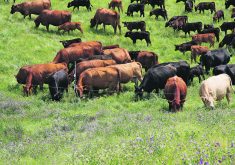Who’s accountable
I’m sitting in my office figuring out my crop insurance for the upcoming year, looking at premium increases of about 50 percent or more, and think of the latest federal blunder – $58 to $60 million on a program to track 36,000 people who likely should have been deported years ago. Now they have to hire someone else to fix this. The gun registration is costing us a fortune. How far would some of these funds go toward crop insurance, health care, education etc.? The big thing is no one is accountable for the overrun.
Read Also

Budget seen as fairly solid, but worrying cracks appear
The reaction from the agriculture industry to prime minister Mark Carney’s first budget handed down November 4th has been largely positive.
– Doug Simon,
Wiseton, Sask.
Vegetable oil
Re: Experts advise against heated veggie oil as fuel (WP, April 10.)
I use Neoteric’s vegetable oil fuel kit to commute to work every day. Ed Beggs at Neoteric biofuels has been a great advocate for vegetable oil as an alternative fuel for diesel cars and trucks. Ed wrote his Master’s thesis on the subject and is very cautious in promoting the use of good quality oil and the use of indirect injection engines.
Your article is misleading, claiming that Neoteric’s kit costs $1,000. The kit for my Volkswagen rabbit cost $229, and I used a $15 tank for the vegetable oil. You can do it yourself with the veg-therm heater that Neoteric sells for $69.
Your article casts a poor light on the work Ed has done. By constantly recommending good-quality canola oil, by providing a diesel purge at the end of each commute and by sticking to the older, more tolerant indirect injection engines, Ed has been able to promote and use vegetable oil as a diesel substitute with great success.
Your article points out biodiesel as an alternative. I also use biodiesel, but only for startup and shutdown. The cost of home-producing biodiesel is 75 cents while the cost of filtering used fryer oil is about 15 cents. The garage-based biodiesel setup I use cost about $1,000. Biodiesel at our local pumps runs closer to $3 per gallon, 50 percent more expensive than regular diesel. Many farmers are pushing biodiesel as another outlet for their crops, usually as a blend of 20 percent with 80 percent diesel. This is a great first step and can complement straight vegetable oil, but it is not a replacement for Neoteric’s system. Unheated vegetable oil, without a diesel purge, is not a good idea for most engines. Good quality straight vegetable oil, properly heated and purged, has proved to be a viable fuel alternative.
– Will Taygan,
Sedro-Woolley, Washington, U.S.A.
APF polka
A common egotistical belief is if they haven’t made something verbose or/and complex, they have failed at the job.
It has been said W. A. Mozart expressed in one musical line more simple easy listening thought provocation than others have presented in pages – even volumes. There is a small popular country-western band, which in hours’ long presentations hasn’t accomplished that which Mozart has in one line.
Relating the “new” APF (agricultural policy framework) safety net to musical productions: its verbosity is reminiscent of that little polka band. The difference being is that little band, in spite of its very repetitive style, makes for easy listening and is not clogged with complexity.
At an APF meeting, we were told this proposal was discussed with some farm groups, which accepted that program. Probably for the same reason (Saskatchewan agriculture minister) Clay Serby reluctantly signed a Vanclief document – because it meant that or no federal aid from Ottawa to the farmers. Then too, the authors of APF insist this is a move guaranteed to benefit all of Canada and that to question the “new” program is inappropriate. We have been deceived before by similar statements. The most recent ongoing example relates to the gun control legislation. And some people still believe we live in a real democracy.Tsk, tsk.
Had common sense prevailed, the safety net would work in conjunction with the income tax system relating to form T2042(E).
Food producers can’t afford storing perishables for extended periods, therefore the accrual system bears little if any significance. To satisfy the accrual lovers, averaging the T2042 returns over a period of five or six years should satisfy them.
If not, then the awkward form listing unsold production at year’s end, the T2042 statement, may be included when applying for assistance.
– Stuart Makaroff,
Saskatoon, Sask.
Research project
I read in your April 3, 2003,
issue that we have another so-called expert that “doesn’t have the research to prove it” regarding “distant barn odour not dangerous.” I have a research project for Phil Willson which would give him undeniable results.
Instead of building a casino in Saskatoon, why not build a modern hog barn on the large parking lot just north of the Midtown Plaza? Also use the mall’s underground parkade as a lagoon. Run the operation no different than any hog barn in rural Saskatchewan. Mr. Willson will have almost 200,000 research participants for 10 years. That should give him a plethora of results to prove conclusively about barn odour.
This would not only be a research project but would also be economic diversification.
– Delwyn J. J. Jansen,
LeRoy, Sask.
Treaty claims
Re: Ranchers relax after treaty claims denied (WP Jan. 9)
Exactly whose “Traditional claim” to that crown land will be honoured?
Cattle producers in southwest Saskatchewan have laid a “traditional claim” to crown-owned pasturelands they say have been in their families for generations. Therefore, more than anyone else, they will understand the concept of a “traditional claim” that has been handed down from one generation to the next. They depend on it for their livelihood. I clearly understand their anxiety over the possibility of losing that livelihood.
Therefore, with all due respect, I would ask them for a little understanding in the right of my First Nation, Carry The Kettle to make claim to their traditional homeland in the Cypress Hills.
That area in the southwest of the province is the traditional homeland of the Assiniboine (Nakota) First Nation, which until 1882 when they were forced by the federal government to relocate, had been handed down to them from generation to generation. They also depended on it for their livelihood. It is a land claim that predates the signing of any “traditional” land leases, and for that matter, predates the signing of Treaty 4.
The initial land claim of Carry The Kettle was denied on Jan. 2 and opposed by a provincial lands branch that does not have the right to grant or deny this claim. Land claim negotiations are made bilaterally between First Nations and the federal government in right of the crown. Under Treaty Land Entitlement, First Nations have the right to claim existing crown land to fulfil their outstanding land claims.
One of the reasons stipulated for the denial of this claim was, that in the process of reverting this land to reserve status, there is a fear that the fragile ecosystem will be upset. That fragile ecosystem has existed for thousands of years and is intact today due to the ability of our First Nation to preserve it as such. If anything will upset it, it is the grazing of hundreds of cattle. The other reason for denial being, the fear that we want this land solely to exploit it for its resources. Now that’s a provincial government fear- a fear that they will lose control of some day exploiting it themselves.
As for my band, Carry The Kettle First Nation, I hope they will be able to reclaim their homeland intact. And also be given the opportunity to demonstrate that as a First Nations government, they can be fair and equitable in business practices. As First Nations people, we have been denied the sharing of resources even in our own lands, and that could have been and still can be, of great benefit to us.
A spokesman for the cattle producers said that for that land to be sold under a TLE without their consent, breaches their lease and relationship with the government. Well, welcome to our world. No one understands better than First Nations the breach of agreements by governments, without consultation, as we have been treated in this manner since the signing of the treaties.
Obviously, the fears of displacement run deeply even in this generation. The fears and anxieties of the cattle producers in this area are truly appreciated. No one, and I repeat no one, likes to be forced out of “traditional claims” and homelands. As a member of Carry The Kettle First Nation, we just want to re-claim our traditional homeland where our ancestors have been laid to rest. That is our anxiety.
I am positive that some mutually beneficial settlement can be negotiated between the agriculturalists, the cattle producers and our First Nation, to allow all parties to achieve their respective goals.
– Debbie Delorme,
Member of Carry the Kettle First Nation,
Montmartre, Sask.
Who’s the enemy?
Re: Farmers take credit for computer clog (WP, April 3)
The quotes from the Liberal spokespersons would have the reader believe that the farmers are the enemy. It could be Mr. (George) Bush talking about Saddam (Hussein). Would Mr. Bush offer a stabilization package to the Saddam regime?
I truly believe that this Liberal government believes that we farmers should all experience foreclosure. Would the good prime minister then offer us all cabinet positions?
– Len Nordick,
Englefeld, Sask.
When safe?
Protestors from environmental and organic organizations met recently in front of four Agriculture and Agri-Food Canada research establishments across the country. The protestors are against the partnership between government and industry on research and specifically as it relates to confined trials of GM crops.
Research collaborations between government and industry relate to all aspects of research, including both organic and biotech. They help to strengthen and reinforce Canada’s position in the global market. AAFC is committed to enhancing the quality of life for Canadians by improving all opportunities within the agricultural sector. An integral part of research involves independent testing of new innovations to determine if the new innovation is safe, economical and practical, including an assessment of both the benefits and drawbacks of them.
Field-testing of plants with novel traits in Canada is strictly controlled by the Canadian Food Inspection Agency under extremely stringent rules to safeguard people and the environment. The mystery behind the field test locations is implemented partly to thwart vandalism, which could result in destabilizing the environmental safeguards put in place by these very regulations. Placing innovative products behind bars before giving them a fair assessment stifles future research initiatives. If the precautionary principle were so harshly applied to products of the past, we may not have explored the properties of penicillin, derived from mould, which has helped save many lives.
Social and economic change is inevitable in a technologically competitive world. What is perceived as natural today may not have been considered natural 200 years ago. The introduction of domesticated wheat and other grains has only become a natural phenomenon in the last century. How long will it take before the crops of today become the staples of tomorrow? Genetically modified crops have been consumed for almost a decade with no harmful effects. How long will it take before they are deemed safe?
– Crystal Wallin,
Saskatoon, Sask.
The facts
I would like to comment on the ethanol article “NFU Slams Man. Plan” in the March 20 edition. Shaun Loney of the Manitoba government suggests I have not got my facts straight. However the data I used was from Manitoba Agriculture Guidelines For Estimating Crop Production Costs 2003. The S&T report done for Natural
Resources Canada underestimates and omits many of the inputs required to produce a wheat crop in Manitoba thus making the report positive for the energy balance of wheat ethanol.
The amount of diesel fuel is about one half of what Manitoba Agriculture says is required (S&T 12 litres per acre, Man. Agriculture 22 L per acre).
The report underestimates nitrogen fertilizer use by 22 pounds an acre (S&T 48 lb. of N Manitoba Agriculture 70 lbs. of N). Information from other ethanol studies would indicate 96 MJs an acre of energy in the S&T report would purchase about $4.25 in farm chemicals. Manitoba Agriculture information indicates it takes $32 in herbicides and fungicides.
There are many deficiencies in the S&T report. There is no energy calculation (table 2-3 on page 4) for wheat seed or hauling of farm inputs (over 600 miles by truck). There is no energy calculation for the manufacture and repair of farm equipment.
According to information from Dr. David Pimentel of Cornell University the energy required to manufacture repair and maintain farm equipment would amount to 3,400 MJ per hectare per growing season. The energy allocation for farm equipment alone can require 33,500 btu’s for every bushel of wheat produced.
The S&T report does no calculation for wastewater treatment or pollution control of volatile organic compounds (VOCs) with thermal oxidizers. Pollution control and wastewater treatment should not be viewed as someone else’s problem. This is directly related to ethanol manufacturing. In the March 20 article Loney states, “Modern ethanol plants do not have wastewater.”
I contacted the city of Chatham, Ont., where Commercial Alcohols operate a 150 million-L ethanol plant constructed in 1998. The city informed me that Commercial Alcohols does have wastewater treatment on site and that the wastewater is nutrient rich with a high BOD level.
Commercial Alcohols has a three-stage sewage treatment system and the wastewater eventually enters the city sewage treatment facility. Loney further states that the wheat yields were “average CPS yields recorded by the Canadian Wheat Board during a 10-year period.” I contacted the CWB to get this information on yield but they informed me that they did not have yield data on grains.
However, Manitoba Crop Insurance Corp. reports that the 10-year average yield Prairie Spring Wheat is 36 bushels an acre while the yield of Red Spring Wheat is 33 bu. an acre. The S&T report uses a yield of 40 bu. an acre that they say they obtained from fertilizer strip trials from … Ag Canada.
Why don’t they use an average yield of wheat grown in Manitoba? Why does Loney now say they got the yield data from the CWB?
The S&T study says that Prairie Spring Wheat’s yield 20 percent to 30 percent more than Red Spring Wheats. Information from the 2003 Manitoba Seed Guide indicates CPS-R wheat yields five percent to 12 percent higher than RSW. The Manitoba Crop Insurance Corp. yield data would indicate about a 10 percent yield advantage for Prairie Spring Wheat.
As a farmer I would like to grow a 40-bu. crop with the inputs of the S&T study.
However that would be totally unrealistic and the Manitoba Agriculture crop input data confirms this. Growing the wheat crop and manufacturing ethanol is very energy intensive. If ethanol plants actually created energy they would use ethanol as a fuel source rather than natural gas in the manufacturing process.
– Kenneth Sigurdson,
Swan River, Man.














